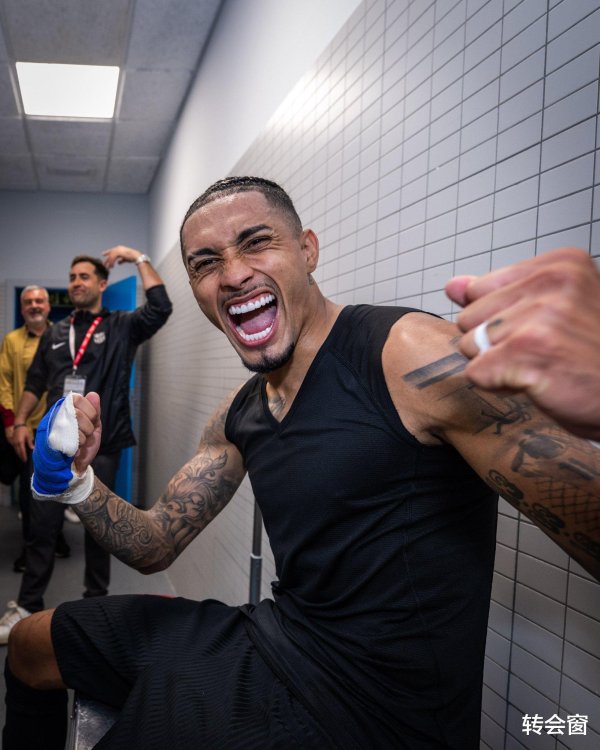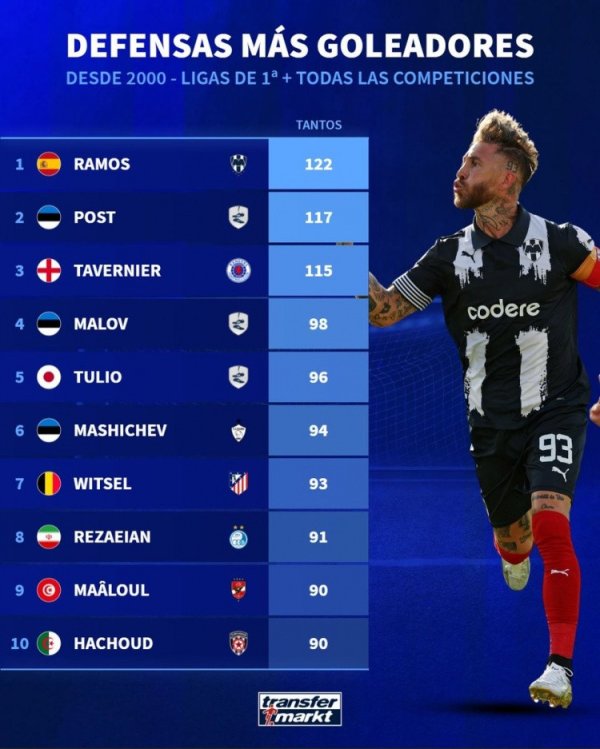HOME > Football
The inverted winger tactic is prevalent in the Premier League. What are the advantages and limitations of this tactic?
1:15am, 24 October 2025【Football】
The reverse-footed winger tactic is prevalent in the Premier League. If I remember correctly, it was Chelsea’s Robben who opened the door. I remember that when Mourinho first came to the Blues, he was very flexible in using Robben.
Generally there are two ways of thinking.
One idea is to put him on the left, corresponding with Duff, and pry open the opponent's door through passing and cutting. Another way is to change positions. During the game, the two people switch their positions at any time.
Sometimes Robben is on the left, and sometimes he switches to the right, which changes his playing style.
On the left, Robben mainly breaks through, and on the right, Robben cuts inside to form a series with Ludopa in the middle to create some deep rib coordination.

Back then, Chelsea's offense was invincible and quite sharp. It was inseparable from Robben's ability to play both left and right, which brought great tactical changes to the team.
Speaking of which, before Robben, had any other players played the reverse-footed winger tactic? Yes. He has played on the right wing for Manchester United's Ryan Giggs. If Beckham and others are injured and unable to play, or the team suffers large-scale injuries, Ferguson will move Giggs from the left to the right.
will also play with an inverted foot.
In the Arsenal team, the player who plays on the opposite foot is Pires, who is the team's "side midfielder". Nominally he is a left midfielder or left winger, but he will cut to the center as he plays, and he will play some coordination with Henry, Bergkamp and others.
It is not rigorous to say that in the 1990s, no team in the Premier League played an inverted winger. At least stars such as Giggs and Pires had already played such a tactic.

Why did I say at the beginning that Robben pried open the door to the inverted winger? This is because Robben is the person who has carried forward this tactic and made it deeply rooted in the hearts of the people.
Compared with the characteristics of Giggs and Pires, Robben is particularly sharp on the court. His breakthrough, dribbling and cutting power are too outstanding, and he plays a decisive role in the Chelsea team.
Pires and Giggs will be rich candidates for the team's tactics in the team; and Robben is a well-deserved tactical changer. He is of great significance to Chelsea and Mourinho's system.
And there is another point, there is an experience that I have to mention, which is Chelsea's "four-goal doctrine". Mourinho just came to Chelsea to coach. In the early days, the team did not have a tacit understanding, and the offensive efficiency was very low. There were often scenes of winning 1:0, and the team did not play very well.
When Robben returned from injury and came into the starting lineup, the team often won games with scores of 4:0 and 4:1, setting off a hurricane in the Premier League.
With or without Robben, Chelsea are completely different, which makes everyone's impression of the "inverse winger" deeply rooted in the hearts of the people.
At this point, the Premier League's reverse-footed winger tactic took shape. Subsequent teams followed suit and began to study the reverse-footed winger tactic. Placing left-footed players on the right and right-footed players on the left will become a standard feature for the team and make Premier League tactics more sophisticated.
When Salah and other stars became famous and gradually established themselves in the Premier League, this tactic began to spread everywhere, and the cooperation of inside cuts and ribs became the regular weapon configuration of each team.

From a football tactical perspective, what are the advantages and limitations of the inverted winger?
Let me first talk about the advantages.
Different from the traditional bottom pass and bottom line breakthrough, the inverse kicking method brings flexibility and has dual tactical value. Cutting inside, he can cooperate with the central attacking midfielder and the retreating center to play some two-on-one and pass-cut coordination, and look for the opponent's player in the gap in the ribs.
At the same time, players who cut inside can also shoot, can hit the far corner, and can also bring another means of attack.
Compared with shooting from the front, it is more difficult to shoot the goalkeeper in the far corner. Since the position tends to be closer to the near corner, there will be gaps in the defense in the far corner. Even if you react to save, it will be difficult to save at the precise angle of the ball speed and arc.
This makes long-range shots another means to break the game.
There is also a 45-degree cross. The bottom cross is close to the goalkeeper and is easy to be saved; the 45-degree cross will tend to pass to the back point, and the arc at the back point will be faster. The players' competition for the top will be far away from the goalkeeper's saving area, which magnifies the advantages of 45-degree crosses and diagonal long passes.

In other words, the tactic of the inverted winger will enrich the team's offensive methods. It will be very beneficial to teams that love and advocate offense, and the opponent's defense will be exhausted.
In terms of limitations, the inverted winger's playing style will also bring about a problem, that is, it is easy to be difficult to configure. Why is it said that an inverted winger's playing style is easy to configure?
The configuration mentioned here does not refer to formations or changes such as 433 and 442, but refers to the compatibility of the players' characteristics.
Like Olise, Kane and others from Bayern in the Bundesliga, the reason why they match up very smoothly is that the characteristics of these players match very well.
When Olise cuts inside, Kane can drop back and get the ball in the middle. Once Olise is double-teamed and targeted, Kane can meet Olise to prevent Olise from being intercepted by the opponent;
If he wants to score, Kane can also come to the penalty area to grab points. At this time, Olise can cross to create opportunities for his teammates.
We said before that the advantage of an inverse winger is diversity, so for players, they must also pay attention to "comprehensiveness". To match the reverse winger, other players on the team must also be comprehensive.
If the player's characteristics are too single, or the playing style is easy to be mastered by the opponent, then the inverse-foot tactics will not work. The opponent has figured out your thinking, and the inward cuts and long shots are all figured out, so the back-foot kicking method will be useless..
Therefore, the tactic of the inverse winger cannot be used indiscriminately. It is not that other teams use it well. You also want to copy it mechanically and imitate it according to this idea.

In addition to the wingers, you also need to consider whether your center has the ability to retreat and respond, and whether your midfielder has the functions of protection and interception. These must be considered.
Don't use this tactic without these configurations, it will be counterproductive.
Football is still played by 11 people. No matter how good the tactics are, everyone must work together to exert its power. If it is separated from the whole, it will be inefficient.
In the future of football, I believe that the Premier League's tactics of reverse-footed wingers will continue for some time. As the high center forward style of play begins to recover, it is not ruled out that the mid-level pass and mid-range tactics will return to the arena, and perhaps "two-footed wingers" will appear by then.
There are both smooth-footed kicking and reverse-footed thinking, which will place higher demands on players.
Related Posts
- Scored the goal immediately after his debut! 15-year-old Liu Kaiyuan started on behalf of Huang Qian U16A team, scored with a low shot and won his first goal!
- Frank: The game proves that we have the ability to compete with the best teams in the world, and more than just competition
- Tough statement + salary cut concessions! Zhekelais rushed to Arsenal with a buzzer-beating
- Overtime work ends in the 2024-25 season. Top 10 of the five major leagues are released. Real Madrid occupies 6 seats
- MiTi: Dybala wants to stay in Rome, if the club offers a renewal offer, he is willing to negotiate
- Reporter: Inter Milan 30 million euros + Stankovic tried to sign Jasari, but the latter refused to join
- The 4 Brazilian teams in the Club World Cup qualify for all the teams, and both Argentina teams were eliminated, but they could not fill in the 10 points behind Argentina in the World Cup qualifiers.
- Real Madrid and Atletico Madrid have brought two unpopularities, South America s quarterfinals remain unbeaten, Club World Cup is not the World Cup
- Photo: Sane did receive special care, but it does not mean that he will not play in the Club World Cup at all
- Dima: Allegri strives to push Milan to sign Rabiot, Marseille will not stop him from leaving the team
Hot Posts
- Scored the goal immediately after his debut! 15-year-old Liu Kaiyuan started on behalf of Huang Qian U16A team, scored with a low shot and won his first goal!
- Frank: The game proves that we have the ability to compete with the best teams in the world, and more than just competition
- Tough statement + salary cut concessions! Zhekelais rushed to Arsenal with a buzzer-beating
- Overtime work ends in the 2024-25 season. Top 10 of the five major leagues are released. Real Madrid occupies 6 seats
Recommend

European Football: Transfer news on June 5

Intercept Huleipzig! Desky Sky: Arsenal and Mosquera are in the lead

Ranking of the most goals in 2000: Ramos ranked first with 122 goals, and Tanaka Tori Wang is fifth

6-1, 36-year-old Inter Milan player Perisic is unsheathed + 2 wonderful passes, leading the team to welcome the Dutch Eredivisie to get a good start

525,000 people support! Cape Verde declares a national holiday on the 13th to support the national team’s bid for the World Cup

[Not vomiting, no pleasure] Ronaldo: The future is yours, so wait a little longer now

Haman: Paligna is very suitable for Manchester United, Kompany values ball control but the players are not good at it

Two connections! In the match against Burnley, Richarlison and Kudus had the best scores in the game